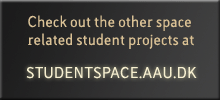Communication System
Purpose
The purpose of the COM subsystem is to communicate with the Ground Station. Below is shown the principles in the hardware used for COM.
Data is received from CDH on the CAN bus. The microcontroller sends data to the modem on the USART and the signal is then conditioned to match the radio input. The radio transmits data to the ground station.
Status
March 20, 2006: The CAN implementation on the PIC has been completed, and it works as expected. All commands can easily be issued from the HSNtest program after we have implemented the COM specific commands. This will help us test all the commands. The COM subsystem has been commanded by the OBC. We have also sent and received data via the radio provided by Holger. This also works as expected.
February 12, 2006: During the last weeks we have worked on the software for COM. The CAN protocol implementation has been completely rewritten by the OBC team and now we are implementing it on the PIC. We have also finished the basig beacon functions, and the sound of the beacon can be heard here:
The battry voltage is transmitted last in the beacon in binary (8 bits), where dot equals zero and dash equals one.
Also the reception and synchronization to analogue signals from the modem has been finished and it's very robust. We have tested at different datarates and dividers, but not all combinations.
October 18:
Today we received the first second prototype PCB from Elprint. It looks good and we will mount the components during this week.
June 26: We successfully transmitted our first data packet with the COM prototypes today. The receiver synchronized to the incoming data stream as expected and the received data was directly forwarded to a PC where the received message could be verified. There is still a lot of work to do, but this test proves that our design is working and that it is possible to exchange data with the COM system.
June 7: The COM prototype PCB has been created, the hardware works as expected and we are currently in the process of programming it. We expect to have a fully functional prototype by the end of this month. From there the shift to engineering should be easy, because the prototype uses the same components as engineering and flight models. Our main problem will be integration with the radio, because the PCB layouts are created with two different programs. A test application is also being developed in order to ease the functional testing of COM.

March 30: Flowcharts for the COM system software has been created. The radio for AAUSAT-II arrived from Germany last Friday and we have been playing with it all weekend. We have made a small test setup with the GND radio and the AAUSAT-II MODEM chips, to test if the modulation scheme was okay. The bandwidth of the radio is unfortunately to narrow for 9600 baud, so we have to skip that one.
But 4800, 2400 and 1200 can be sent and received with very little distortion.
We have sent a few images through the radio and modems at 1200 baud with very few errors and the results can be seen here.
The errors is probably caused by a bad connection in the GND modem.
Higher speeds are not available yet because we haven't implemented synchronization, but we will do that on our next PCB.
To Do
1. Finish the HSNtest COM specific stuff (housekeeping and ax.25 decoding).
2. Code the backdoor stuff & clean up the COM code.
3. Test & tweak.
4. Build engineering model with (new) radio layout.
5. Test.
6. Build flight.
Documents
Preliminary study report: COM.pdf
Documentation report: Media:COM_doc.pdf
Schematic: Media:COM_Schematic.pdf
For work sheets and more information contact the system engineer for this subsystem
Files
Footprints for the PCB used for the Communication system. Includes several connectors and components. Misc_Devices.PcbLib
Active Members
Please contact us using our group-mail (mailto:05gr834@control.aau.dk).
- Bo Ørsted Andresen (mailto:boan02@space.aau.dk)
- Claus Grøn (mailto:cgro02@space.aau.dk)
- Claus Nielsen (mailto:cnie02@space.aau.dk)
- Kresten Kjær Sørensen (mailto:kkso02@space.aau.dk)
Aditional Infomation
We are the GND group as well




